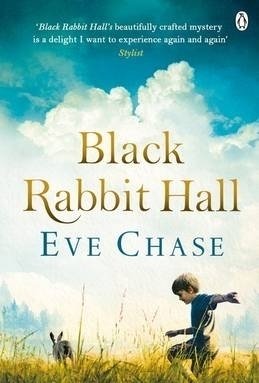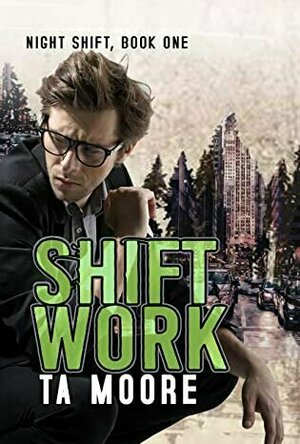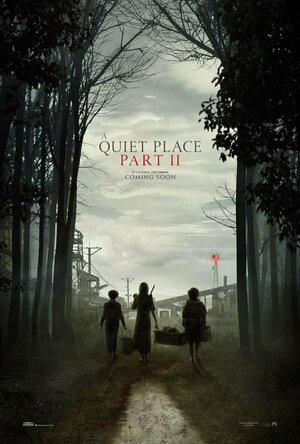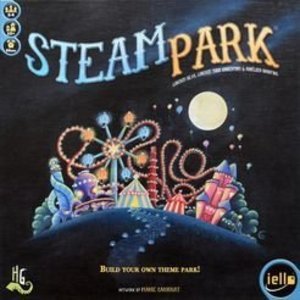Debbiereadsbook (1614 KP) rated Shift Work (Night Shift #1) in Books
Mar 13, 2021
However!
I went into this book thinking it was a complete story. And its freaking NOT!! It's a mahoosive cliff hanger, and my poor kindle is lucky to still be working!
Cos there I was, merrily reading away, not paying much attention to how much I have left, and BOOM! The end crept up on me and I was OMFG and JHFC and all kinds of loud swear words a sailor would be proud of!
Oh, this is a bloody good book, but you need to know, its a cliff hanger, one of Dover Cliff size and I didn't know that!
Anyway, now I've ranted about that, here's what I really thought ;-P
I bloody LOVED this book! These werewolves are somewhat different, and it took me a little time to piece together the clues about how they are around "that time of the month" (I loved those little jokes, they proper made me chuckle!) They are dark and deadly around the full moon. Cade has just a few days to find out who the girl is in the morgue, the one who shouldn't be there. Working with Marlow, who is Night Shift (capitals intended, its how it is said in the book) and null. It took me a while to figure out what THAT meant, and I'm not entirely sure I've fully got it, but you make your own mind up.
I've not tagged this as romance. There is steam and attraction, but there is no romance here, not yet. Oh they have a moment in the bathroom that was rudely interrupted, but once they get some time together, the chemistry will explode, I'm sure.
I have it on authority that the next book isn't too far away, and I really hope that Ms Moore doesn't cliff hang that one, cos I'm not sure that my kindle can survive a second trip to the wall so close to the last one!
It's only 117 pages, but packs a mighty powerful punch!
So, all in all, a bloody good book, but April needs to hurry the chuffing heck up!
5 stars (but I would, even for such a short, cliffhanger book, give it more if I could!)
**same worded review will appear elsewhere**
Leanne Crabtree (480 KP) rated The King's Men (All for the Game, #3) in Books
Jan 11, 2021
This one picks up a few days after the second book with Neil a battered mess and on his way to the Foxhole Court for training. He has some explaining to do to his team mates about where he disappeared to over Christmas and about the state he's in. Add in the tension that's sparked between Neil and Andrew and the budding friendship between the rest of the group and this is a roller coaster.
Everything was now out in the open and the shit had hit the fan, pitting Neil against his abusive father, and I was honestly waiting for Andrew to come kicking the door down to rescue him. (I'll let you read it to figure out if that actually happened) It was some crazy stuff but God, I was hooked. I'm just glad that nobody I'm come to care about in this series died in this one. Good riddance to the evil ones though.
I haven't been this invested in a series or bunch of characters in a long time. I was literally bouncing in my seat when the final match between the Foxes and the Ravens began, thinking "Come on, guys, you can do it!" and what a ride it was! I actually had to put it on hold while i went to work at 98% and couldn't stop thinking about it on my half hour walk, waiting for when i could finish those last few pages. It was killing me! Luckily I had a little time before I started and binged it and wow! I wish that there had been a separate little epilogue with just Andrew and Neil to see them now that the threat had gone. (I totally understand why people have written fanfic about this series!)
Every single one of the characters grew in one way or another as people, thanks to Neil's urging - okay, maybe not Andrew as such, he's still a little psychotic at times - and I feel like most other people who've read this book that i may have to reread it once a year or so just to relive this amazing series. Yes, it is dark in places but you can't help caring for this team of friends and urging them to come out of the other end after their crappy upbringings.

GV Mobile + for Google Voice
Productivity and Utilities
App
The ORIGINAL Google Voice app is back and better than ever! See the video here: http://goo.gl/OHCZQ...
LeftSideCut (3776 KP) rated Star Wars: Episode IX - The Rise of Skywalker (2019) in Movies
Dec 20, 2019 (Updated Jan 22, 2020)
Just like TLJ before it, there are things that I liked about Rise of Skywalker, and plenty that I didn't. There are also parts that I liked overall, but we're executed poorly - this unfortunately seems to be what to expect from Star Wars these days.
The opening act of ROS, so let's say the first 40ish minutes, felt like a complete mess to me. We are thrown from scene to scene without having much time to catch breath. It feels panicky, and not in a good way.
It not really until the-bit-from-the-trailer-where-rey-jumps-over-a-tie-fighter that the narrative seems to just calm down a bit and find it's footing.
What follows is a mixed bag of humour and mild action which is a bit so so, slowly leading up to the films finale.
I have to say, I actually really enjoyed the majority of the third act. The action scene that takes place on Endor is fantastic. It looks amazing, some of the visual shots are great, and the choreography just about resists falling into prequel territory lightsaber battles.
The final battle, again is visually stunning, and though at times corny, I felt it was a suitable end scene for the saga.
In terms of characters - I once again enjoyed Rey, even i was left undecided with how her arc was left off - the same goes for Kylo Ren, and once again, Adam Driver was a massive highlight throughout.
However, I once again found myself struggling to like Finn and Poe, and it seems that after the events of TFA, both of these characters were just a bit of dead weight, still included in the larger narrative because the actors had signed contracts. Finn runs into a group of defective stormtroopers at one point, and the movie sort of half-arses them into the story, but they ultimately serve no real purpose.
The narrative is also guilty of setting up a potentially important plot beat between him and Rey, which is eventually dropped and forgotten without mention.
Leia's story felt a bit unfleshed, and that surely down to the limited footage they had to work with.
There are two moments that stuck out when it comes to bad execution - the reveal of Rey's lineage is sudden and questionable, but the dialogue used when Kylo Ren delivers the revealing line is laughable, and spoils any weight the moment may have otherwise had. The second is when we are inevitably introduced to Luke's force ghost, a moment that has been coming since the events of TLJ, is delivered with a fan-service line referencing the moment where he threw his lightsaber away at the start of said film, and this bring me to one of my main criticisms of ROS.
I was not the biggest fan of TLJ, but as I mentioned in my review for it, I have a lot of respect for Rian Johnson for trying something new, and ROS reverses a lot of what he did. It feels a bit disrespectful, and a bit spineless.
This also happens a few more times in regards to plot points to do with Chewbacca, and C3-PO - the narrative sets up a fairly ballsy move, and then reverses it and plays it safe. It's a little frustrating.
Palpatines return is something that I can just about get behind - he looked suitably terrifying - but I just wish that the groundwork had been put down a bit more in previous films (films, not the TV shows). Instead, it does have a bit of a desperate ret-con feel about it.
But enough moaning from me, have some more positives - the music score is once again fantastic, the visual effects and CGI are pretty damn good (barring a couple of dodgy shots here and there), and I once again enjoyed the locations that we visited.
Rise of Skywalker will no doubt be devisive, just like The Last Jedi, and it's a film filled to the brim with thrilling Star Wars moments, as well as really really stupid moments, but to be honest, I've come to expect no more and no less at this point. Go and see it for what it is, and try and have a good time, because for the most part, it's pretty entertaining sci-fi fluff.
Side note - Everytime Merry from Lord of the Rings popped up, I found it completely distracting...
Gareth von Kallenbach (980 KP) rated Alpha (2018) in Movies
Jul 2, 2019
Jóhannes Haukur Jóhannesson) as Tau, his father.
Tau is the tribe leader, and must determine whether the young male tribe
members are ready for the annual hunt. He tests all the spear points
crafted by the boys, and passes or fails them based on the craftsmanship
of the arrowheads.
Keda is one of the only two young men that pass the test, and in spite
of his mothers (and his own) reservations, joins the hunt.
Keda isn’t a strong figure, like his father Tau, and the movie shows
some of the tension and strife this causes the father and son. Tau is
trying to teach Keda to be a leader, and Keda seems too soft-hearted to
be able to bear the task. Keda has a hard time with the killing of
animals, even though it is needed to sustain the tribe.
The annual hunt consists of tracking down a herd of bison over a span of
days, and then creeping up on them on their grazing grounds and spooking
them into headlong flight over the edge of a high cliff. The hunters
must keep the herd from turning back to the open plain by throwing their
spears and running full-tilt at the bison. The run to push the bison
over the cliffs edge starts off well, and then takes a tragic turn when
one of the bison turns towards the hunters and charges at Keda. Kedas
confidence breaks and he turns tail to run, with the bison chasing him
down. When the bison lowers his head to charge at Keda, the bisons horn
catches in Kedas clothing and the bison turns towards the cliff face and
dump Keda over the edge.
Keda miraculously lands on a rock outcropping about half way down the
cliff face, but it is still too far for Tau to reach him. Keda is
unconscious, and does not respond to his fathers calls.
Tau is convinced that he must leave his son for dead and head towards
home in order to be able to provide for the tribe.
A day later, Keda wakes and finds himself alone, with broken bones, and
no way to get off the cliff face.
What follows is a story of coming of age and determination. Keda must
find his way off the cliff face, and using the tools given to him by his
father on the way to the bison hunting grounds, find his way home. He
finds unlikely companionship in a wolf that he injured while the wolf
pack was hunting him down to try to eat him, which he nurses back to
health. He names the wolf “Alpha”, but in truth, it is Keda who is
learning to become the alpha, or leader of the pack.
The scenery in the movie is breathtaking, and the movie really comes to
life with the 3D option. I can only imagine that it would be even better
in IMAX.
There were pieces of the film that were entirely un-realistic, but they
were rather quickly covered up by the fast-paced nature of the film.
The only part I really groaned at was the very end scene, but I will let
you draw your own conclusions on that so that I don’t ruin it for you!
My son just turned 10 and he liked it a lot, but did mention that a few
parts were not 100% “kid-friendly” due to the scare-factor. He was
specifically referring to one scene that made us both literally jump in
our seats. He said over all the movie was great and that he enjoyed it
immensely.
I would give this movie 3.5 out of 5 stars, and recommend that you see
it in IMAX 3D if you are able!
Bob Mann (459 KP) rated A Quiet Place: Part II (2021) in Movies
May 29, 2021
In a pre-title sequence, we return to “Day 1” of the events of the first movie to see how life in the Abbott’s home town changed forever when chaos reigned down from the skies.
Rolling forward 473 days later, the plot picks up on the life of Evelyn (Emily Blunt), Regan (Millicent Simmons) and Marcus (Noah Jupe), following the dramatic events of “A Quiet Place” and the death of husband/father Lee (John Kravinski).
The three, together with Evelyn’s newborn, set off on a perilous journey to find help.
Positives:
- Sequels often try to over-reach, lobbing-in over-the-top action and forgetting why the audience so loved the original hit. This sequel doesn't fall into that trap, continuing the story in a seamless way. We very quickly get reinvested in the character's dire situation (as their situation suddenly gets even more dire!).
- The pre-title sequence is perfectly paced and utterly thrilling. It's the sequence that most grabbed my attention so many months (years?!) ago when - pre-Covid - I first saw the trailer attached below. That bus!!
- The ensemble cast works well together. Cillian Murphy is a fine actor, filling the Krasinski-shaped hole. And Emily Blunt is as kick-ass and wonderful as always. But special 'attaboys' need to go to the two youngsters, Millicent Simmonds and Noah Jupe. They were impressive in the first movie but here have to carry even more of the dramatic action and are just brilliant.
- Technically, the film has Oscar-worthy strengths.
-- The editing here is first rate: many of the jump scares are well-signposted, but they still work thanks to the timing of the cuts.
-- The sound design is (as you would expect) fantastic: once again this is a movie where snacks should be banned!
-- The soundtrack, by Marco Beltrami, is great, building on his themes from the original but knowing when to shut-up as well!
Negatives:
- It's a genuine joy to see John Krasinski in the dramatic pre-title sequence reprising his role of Lee Abbott. But then his massive presence is missed for the rest of the movie. Perhaps killing him off at the end of part 1 wasn't such a good idea?
- There's a lot of 'grief and mourning' to contend with here, post- (or nearly post-) Covid. This didn't affect me. But the illustrious Mrs Movie Man was 'not mentally ready' for it, and actively disliked the film as a result.
Summary Thoughts on "A Quiet Place Part II": Often a sequel doesn't live up to my expectations. Particularly so when I've loved the original AND had to wait SOOOOOOoooooooo long to see it. But this time I was not disappointed. I gave the original 5 stars. This naturally lacks the originality of the premise and is - imho - less good. But not by a great margin. It's still a rollercoaster thrill-ride that - at 97 minutes - doesn't overstay its welcome. Sometimes 'more of the same' is enough.
This is also a great movie to get people back into cinemas. Because, ladies and gents, since this is a MUST SEE on the big screen, and ideally in a screen with a great sound system.
As long as Krasinski stays at the helm, I'll personally be looking forwards to AQP - Part III, which I understand is in the works.
(For the full graphical review, please check out One Mann's Movies on t'interweb or Facebook. Thanks.)

StudentLife Organizer
Productivity and Education
App
--TRY STUDENTLIFE TODAY FOR FREE-- StudentLife is the calendar application and organizer designed...
Purple Phoenix Games (2266 KP) rated Steam Park in Tabletop Games
Aug 15, 2019 (Updated Aug 19, 2021)
Steam Park is a real-time dice rolling, theme park building, negative VP mitigating game for two to four players. In it players are theme park owners who are attempting to build the greatest park in the land hoping to attract many robots and keep their parks squeaky clean. The game spans six rounds of four phases and the player with the most VP at the game end will be the winner!
To setup, separate all the different components by type and color and shuffle the cards into a face-down deck. Deal each player six dice, one large starting tile to build upon, six cards from which they will choose to keep three, and one pig board. The game may now begin!
The four phases of each round are Roll, Dirt, Actions, and Income. During the Roll phase players will simultaneously be rolling their dice until they get a result they like. The first player to finish will quickly grab the First Player token in the middle of the table. Each other player may continue rolling as much as they like, but the turn order tokens will be taken one by one until they are all gone. Bonuses exist for the First and Second Player tokens and a negative bonus for the last player (more Dirt).
The Dirt phase causes each player to add Dirt tokens to their park according to the number of Dirt symbols rolled on their dice as well as the number of visitors currently in their park. The player who nabbed the First Player token can now discard four Dirt tokens from the bonus while the last player will add two more Dirt tokens to their park.
Actions that can be taken during the next phase include: Building Rides, Building Vendor Stands, Attracting Visitors, Cleaning Dirt, Playing Bonus Cards, and Expanding the Park. Each of these actions cost symbols rolled on the dice. To build a ride of capacity three, then three Build symbols would need to be spent from those rolled, et al. The only Action that requires no specific symbol is the Expand the Park. Use any symbol to add on a small square tile to the existing park layout.
Players will collect $3 (not USD, just the game money) for every visitor enjoying their park amenities during this Income phase. If a player has less than three Bonus Cards they may draw two from the deck and choose one to take in hand.
The game continues in this fashion over the course of six rounds total and once the final Income phase has been completed players will consult the Final Dirt Track to see how much will need to be paid in Dirt fees. Whomever ends the game with the most money wins!
Components. This game has a LOT of cardboard components. Nearly everything in the box is medium-quality cardboard and generally fine. The art is quirky, whimsical, and endearing. The insert leaves much to be desired so I made my own out of foam board. I have no complaints about the components except that I wish I could visit some of the rides, and I am still not super sure why the dice locking area is a metal pig token.
I originally played Josh’s copy he brought over to my house. I fell in love with it right away, and I still very much enjoy it. It will never make my Top 10 Games of All Time, but I will cherish my copy. I have yet to add in the Play Dirty expansion for it, as I like the base game so well, but I plan to sometime soon.
What I like most about it is the real-time rolling of the dice coupled with the grabbing of the turn order tokens when satisfied. This means that I could just go with what I roll after one roll, or I can take my time and just accept the Dirt coming my way. Sometimes being last and taking that extra Dirt is worth having all the dice read what you really want.
I also like having a lot of vendor stands in my park. Finding room for them is a different story, but I end up usually having just a few rides and mostly stands. They each provide some different benefit or way to change up the game a little that I just love to take advantage of them.
I adore games with real-time dice rolling, so I was predisposed to being attracted to Steam Park. Coupled with the great overall theme, this is an easy win for me, and a prized entry in my collection. In fact, I’m not the only one of us who thinks this as Purple Phoenix Games gives Steam Park a monotone-robot-thrill-seeker-scream 14 / 18. If you are tiring of Escape: The Curse of the Temple (which is possible), then pick up a copy of Steam Park. It will spark your joy of frantic dice rolling once more!

Black Rabbit Hall
Book
One golden family. One fateful summer. Four lives changed forever. Amber Alton knows that the hours...

Month Calendar 2
Productivity and Utilities
App
Month Calendar is an amazing and simple way to manage your calendar. You get a brilliant overview at...





